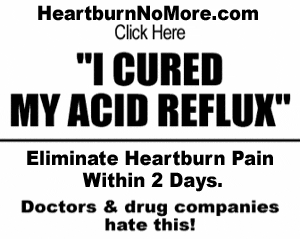
Heartburn Medicine & TreatmentsThere is a wide range of antacids and heartburn medicine available by the drug companies. Some of these can be purchased at the local pharmacy while the other require a prescription from the doctor. All of these drugs work by trying to treat the symptoms and conditions caused by stomach acid and either low or high levels of acidity. The stomach produces an acid (hydrochloric acid) which helps break down the food which you eat, or to be exact, the proteins within that food. That acid is what causes the stomach to be acidic and normally at a pH level between 2 and 3. The pH levels are a measurement of acidity where the lower the number, the higher the level of the acidity. The scale runs from 0 to 14, and the score in the middle is considered neutral. There are many ways in which people attempt to lower their acidity levels and this is where the alkaline diet planted its roots. The antacid medications are broken down into a couple different genres. There are the gentleover the counter antacids along withhistamine H2 blockers, and on the other side of the spectrum the strong prescriptionproton pump inhibitors along with theprokinetic agents. Warning: None of the medications listed actually cure heartburn or reflux as there is no known cure. All they try to do is control the symptoms which allows healing to occur. All antacids can interfere with other medications if taken at the same time.
The most common ingredients in antacids are aluminum salts, calcium carbonate, magnesium salts and sodium bicarbonate (baking soda). These can be bought over the counter and come in the forms of liquids, chewable tablets or pills. These work by either creating a foamy barrier on the top of the stomach acid, helping contain the gas bubbles in order to prevent burping or simply trying to lower the acidity to a more manageable level. Take according to manufacturers directions or as directed by your doctor.
Originally introduced as prescription pills in the 1970s, now are allowed to sell over the counter as the drug companies reduced their strength levels. They work by blocking the histamine receptors during the act of the digestion which suppresses acid production. As these drugs may mask the presence of a stomach malignancy, a throughout physical examination is suggested before taking them. For serious cases of heartburn (occur twice a week) but do not take for any longer than two weeks without doctors approval.
These drugs debuted in the early 1990s and were touted to be much more effective than histamine blockers. Once ingested, they enter the blood stream and bond with the proton pumps in order to inactivate them for one to three days. When this happens, the actual production of stomach acid ceases and thus the injured parts have plenty of time to heal. As many people simply cannot afford them due to insufficient coverage, it really begs to question and ask for an overhaul of our current health care system. Many studies conducted by the medical field has proven for these to be quite effective in battling GERD symptoms as well as treating an erosive esophagitis. As people have different body chemistry, the doctor might go through a bunch of these in order to find the one that works right for the patient.
These drugs work by expediting the digestion and movement of the food into the colon. Some people find that it takes them a long time to digest the food and this in turn gives chance for the acid to splash into the esophagus causing unpleasant symptoms. In certain cases the agents also strengthen the LES, but that is really dependent on the individual involved as we are all different.
Related Articles:
| |||
*Disclaimer: The information found on this website should not be used as a replacement for professional medical care for the diagnosis, prevention, or treatment of reflux. Please consult with your general practioner or pharmacist before attempting to use any medication (prescription or OTC) or following any of the treatment methods mentioned. This information is provided solely to help you become as informed as possible about the acid reflux condition and its symptoms. |
Home About Us Privacy Contact Us Site Map
© Copyright www.acidrefluxsymptomsnow.com , 2010. All Rights Reserved.
Content Network: asbestos compensation | lower back pain relief



